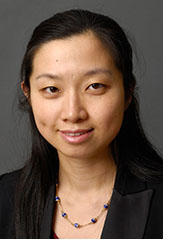The benefits
In groups, students can experience different roles in the filmmaking process (director, videographer, editor, actor) and combine their diverse talents and interests. “I try to get students to learn about film by making a film. You can only get one perspective working as an individual. In groups, they can take a turn acting and conveying the perspective of others.” Multiple students have identified "teamwork" on their evaluations as something they learned in the course.
The challenges
“It’s very difficult to break apart familiar groups and encourage students to work with new partners.” Li and her teaching team promote new collaborations with class pair-and-share activities, section facilitation, and a course-site discussion board.
Takeaways and best practices
-
Collaboration enables cross-pollination.
Students benefit from the expertise of their classmates when they work in groups, especially when some students have videomaking expertise, which can elevate the work of their creative endeavors. However, Li emphasizes that technology is not the course focus and conveys in her evaluation rubric that technical execution is only one component of the final project grade (idea and narrative, course relevance, and collaboration are the others).
-
Choice helps students own and celebrate their work.
Even with the option, only a handful of students decide to write a traditional final paper for their final assignment. Most elect to pursue a creative assignment such as making a film or composing a film score, often with classmates. Students also gather for a term-end screening and celebration of one another’s work at the course’s Golden Monkey Awards, named for a mythological monkey with transformational abilities—a perfect metaphor for cinema.
-
Reflective statements promote accountability and reveal students' thinking.
Li requires all students to submit an individual artist’s statement with their final project, articulating and evaluating their original concept and execution plan, which is graded individually and helps reveal the individual contributions and collaborative processes of a group. “This helps me see their thinking, how they learned and used new tools in the course, and whether they can analyze the explicit, implicit, and symptomatic meanings of their work.”
Bottom line
Collaborative assignments build course culture and community, help students leverage their strengths, and allow them to practice negotiating multiple ideas for one project: “They learn a lot about each other in ways that they would not otherwise, including how to work with one another.”
 Jie Li, Assistant Professor of East Asian Languages and Civilizations, provides students with multiple opportunities to collaborate in General Education course AI 63 East Asian Cinema. Students have the option to collaborate in groups of four to five, on projects such as a short film or screenplay, for their weekly and final assignments.
Jie Li, Assistant Professor of East Asian Languages and Civilizations, provides students with multiple opportunities to collaborate in General Education course AI 63 East Asian Cinema. Students have the option to collaborate in groups of four to five, on projects such as a short film or screenplay, for their weekly and final assignments.
